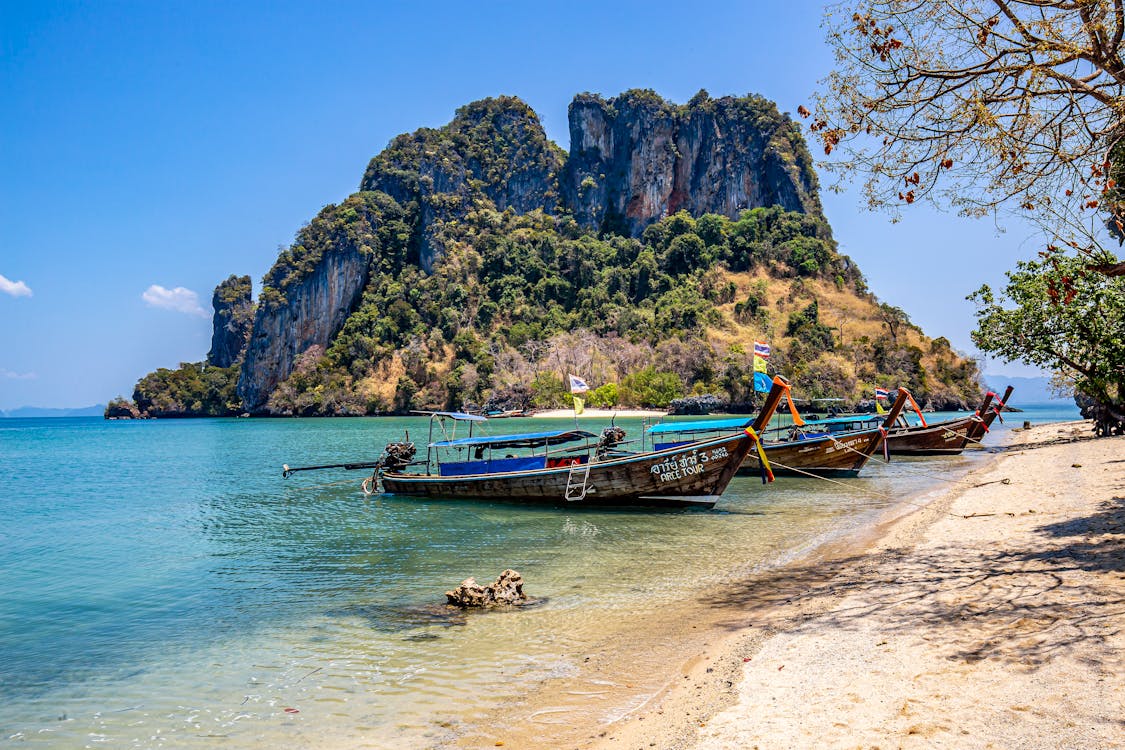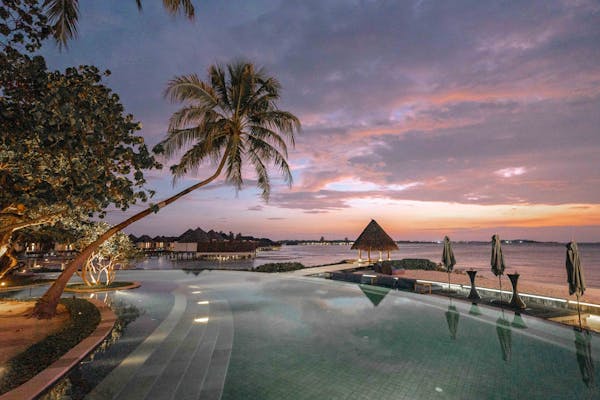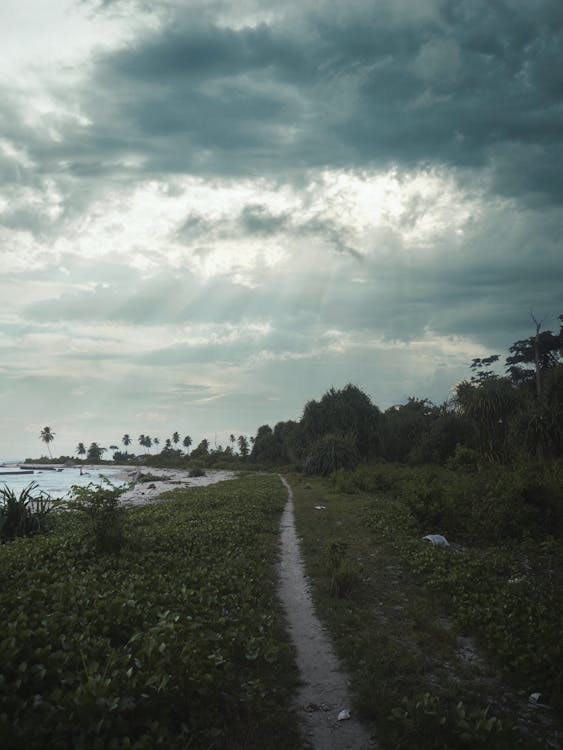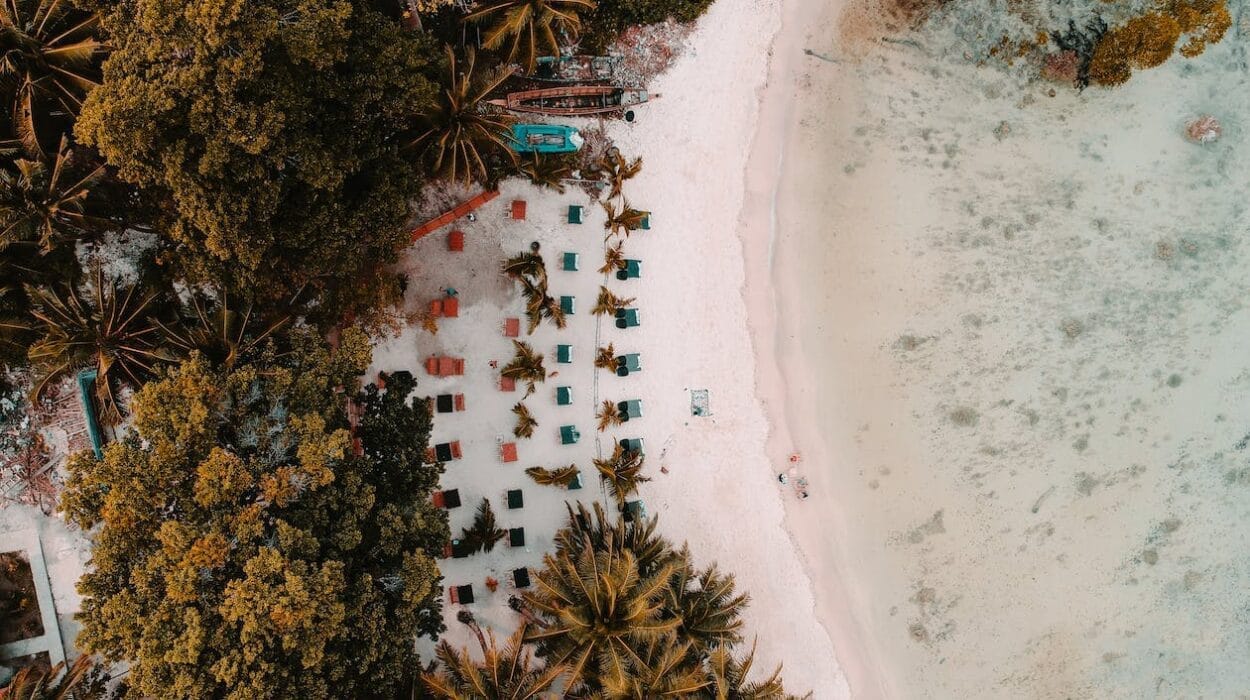The Andaman and Nicobar Islands are a mesmerizing archipelago in the Bay of Bengal. Their pristine beaches, turquoise waters, and lush tropical landscapes attract tourists. Known for its all year lovely environment, the islands hold an extraordinary charm in any event, during the storm season, which ordinarily ranges from June to September. Regardless of a periodic downpour showers, the rainstorm carries with it an alternate appeal, changing the islands into a verdant heaven. This framework will dive into the universe of Andaman and Nicobar the travel industry during the rainstorm, investigating the upsides of visiting during this season, weather patterns, energizing exercises and encounters, security tips, and suggested pressing records. Even in the midst of the monsoon, the Andaman and Nicobar Islands have a lot to offer, whether you want peaceful beaches, wild adventure, or cultural immersion.
Activities and Experiences
A. Waterfalls and Experiences:
Numerous waterfalls cascade down from lush hills in the Andaman and Nicobar Islands during the monsoon season. A portion of the must-visit cascades include:
- Sadhoo Waterfall (Little Andaman): Trekkers and nature lovers alike will find a peaceful setting at this charming waterfall. The climb through the thick backwoods to arrive at the falls adds to the experience.
- White Surf Waterfall (Incredible Nicobar): Concealed in the midst of thick wildernesses, the White Surf Cascade is a shocking sight, putting forth it worth the attempt to reach.
- Kala Pathar Waterfall (Havelock Island): Situated in the midst of flawless vegetation, this cascade is a beautiful spot for unwinding and restoration.

B. Natural life and Marine Life:
The monsoon season offers unique opportunities to observe the islands’ vibrant marine ecosystem and diverse wildlife.
- Bird Watching (Chidiya Tapu): During the monsoon, birdwatchers will find the Chidiya Tapu, or Bird Island, to be a haven. In the lush background, a variety of migratory and resident bird species can be seen.
- Walking in the jungle and trekking: Investigating the islands’ rainforests on directed trips and wilderness strolls permits guests to experience outlandish verdure, including unique case species, butterflies, and endemic plants.
- Swimming and Scuba Plunging: While a water-based exercises might have limitations because of difficult situations, certain plunge locales stay open during the rainstorm. Scuba plunging and swimming aficionados can observer flourishing submerged life and lively coral reefs.
C. Cultural Experiences:
The rainstorm season offers an opportunity to submerge oneself in the islands’ rich social legacy.
- Celebrations and Occasions: Nearby celebrations and occasions, like Island The travel industry Celebrations and ancestral festivals, give a legitimate look into the practices and customs of the Andaman and Nicobar people group.
- Ancestral Town Visits: Find out about the one of a kind way of life of the native clans by visiting assigned ancestral towns with the direction of approved faculty.

D. Things to do inside:
For a really long time when the downpour is excessively weighty for open air exercises, the islands offer a few indoor attractions to investigate.
- Port Blair’s Samudrika Naval Marine Museum: This exhibition hall features the locale’s marine biodiversity, ancestral culture, and the islands’ job in India’s opportunity battle.
- Anthropological Gallery (Port Blair): Through displays of the indigenous people’s traditional tools, artifacts, and way of life, you can learn more about the indigenous people and their history.
- Cell Prison Public Remembrance (Port Blair): Experience an impactful excursion through India’s frontier past by visiting this noteworthy site, where political detainees were imprisoned during English rule.
The Andaman and Nicobar Islands’ monsoon season has its own special appeal for adventurous travelers looking for more peace and quiet. While specific exercises might be restricted because of weather patterns, the magnificence of the islands in their downpour washed wonder and the opportunity to submerge oneself in the neighborhood culture make it a critical chance to investigate this tropical heaven.
Recommended Packing List
While heading out to the Andaman and Nicobar Islands during the storm season, it’s vital for pack shrewdly to guarantee solace and comfort in spite of periodic downpour showers. Here is an exhaustive pressing rundown to set you up for a vital outing:
Appropriate Clothing:
- Lightweight, speedy drying clothing: To remain comfortable in the humid conditions, pack fabrics that are breathable, such as cotton and synthetic blends.
- Overcoat or Waterproof Coat: You will be able to explore the outdoors while being shielded from sudden downpours with a waterproof jacket or raincoat of good quality.
- Shoes That Stay Dry: For trekking and walking through wet terrain, waterproof sandals or shoes are ideal.
- Umbrella: A smaller travel umbrella can be convenient for light showers and is not difficult to heft around.
Personal Items:
- Sunscreen: Sunscreen should always be used to protect your skin because the sun’s rays can be strong even during the monsoon.
- Bug Repellent: Mosquitoes are more predominant during the blustery season, so convey a compelling bug repellent to stay away from chomps.
- Cap or Cap: A wide-overflowed cap or cap will safeguard your face from the sun and light downpour.
- Sunglasses: Safeguard your eyes from UV beams with a decent sets of shades.
- Essential Clinical Supplies: Adhesive bandages, antiseptic ointment, painkillers, and any necessary prescription medications can all be found in a small first aid kit.
- Reusable Water Jug: Carry and refill a reusable water bottle whenever you need to stay hydrated.
Waterproof Bags:
- Dry Bag: Keep your hardware, camera, and different resources protected from water harm by utilizing a waterproof dry sack.
- Plastic Ziplock Sacks: Separate wet garments or frill from the dry ones in ziplock packs to keep up with association.

Miscellaneous:
- Travel Connector: Guarantee you have the right connector to charge your gadgets according to the nearby fitting setups.
- Power Bank: Keep a power bank convenient to charge your gadgets in a hurry, as you may not necessarily in every case approach electrical plugs.
- Travel Records: Convey all important travel archives, including your visa, ID, travel protection, and lodging reservations.
Light Tidbits and Water:
- Convey a few light tidbits and water containers to keep you stimulated during journeys.
Relaxation Things:
- Books, Tablet, or Travel Diary: Appreciate relaxation time with understanding material or reporting your excursion.
Money and Cards:
- Even though major towns have ATMs, it’s best to bring enough cash with you to cover small purchases and emergencies.
Make sure to pack light, as over the top baggage can be lumbering during your outing. Remember that weather patterns can change quickly, so be ready for both radiant and blustery days. With the right pressing show, you can completely partake in the Andaman and Nicobar Islands’ magnificence and appeal during the supernatural storm season.
Popular Monsoon Destinations
Havelock Island: Havelock Island is a jewel of the Andaman archipelago, prestigious for its dazzling sea shores and lavish vegetation. Regardless of the rainstorm, its regular excellence stays dazzling. Some must-visit puts on Havelock Island during the blustery season include:
- Radhanagar Beach: Frequently promoted as perhaps of Asia’s best ocean side, Radhanagar’s excellence is highlighted during the storm with its shining waters and verdant environmental elements.
- Elephant Beach: Known for its submerged marine life, swimming at Elephant Ocean side can be a dreamlike encounter in any event, during the storm.

Neil Island: Neil Island offers a laid-back and serene feeling, ideal for voyagers looking for a tranquil retreat during the storm. Eminent attractions to investigate on Neil Island include:
- Sitapur Beach: Otherwise called the Dawn Ocean side, this spot offers amazing perspectives on the dawn into the great beyond, particularly charming during the storm.
- Laxmanpur Beach: The ocean side’s quiet climate, with its normal stone developments and lovely nightfalls, is an amazing sight.
Port Blair: As the capital of the Andaman and Nicobar Islands, Port Blair offers a blend of history, culture, and nature. While a few outside exercises might be restricted during weighty downpour, the city flaunts a few indoor attractions like galleries and verifiable locales:
- Cellular Jail National Memorial: A critical verifiable site where India’s political dissidents were detained, giving a brief look into the nation’s battle for freedom.
- Museum of the Samudrika Naval Marine: An interesting gallery exhibiting the district’s marine life and biodiversity.
Chidiya Tapu: Known as the Bird Island, Chidiya Tapu is a heaven for birdwatchers, particularly during the rainstorm when transient birds run to the island. It’s a great place for nature lovers because of the beautiful scenery, mangroves, and sunsets.

Baratang Island: In spite of its distant area, Baratang Island merits a visit during the rainstorm for its exceptional limestone caves, thick timberlands, and captivating mud volcanoes. Boat rides through thick mangrove creeks make the journey to these attractions an adventure in and of itself.
Ross Island: A previous managerial capital of the Andaman Islands during English rule, Ross Island is presently a verifiable site with vestiges and leftovers of provincial engineering. It gives a fascinating look back at the island’s history.
Keep in mind that the weather and safety concerns may prevent some activities and certain destinations from being accessed. Continuously check with nearby specialists and travel guides prior to setting out on any trips. The Andaman and Nicobar Islands offer a striking encounter during the rainstorm season, displaying an alternate side of their regular excellence and social appeal.
How to Reach
Arriving at the Andaman and Nicobar Islands includes a blend of air and ocean travel. The islands are generally remote and situated in the Straight of Bengal, off the eastern shoreline of India. The following is a detailed itinerary for getting to the Andaman and Nicobar Islands:
By Air:
The essential passage to the Andaman and Nicobar Islands is through Go Savarkar Worldwide Air terminal in Port Blair, the capital city. You can arrive at Port Blair by taking a departure from significant Indian urban communities like Delhi, Kolkata, Chennai, Mumbai, or Bangalore. Various carriers work ordinary trips to Port Blair, and the span of the flight fluctuates relying upon the takeoff city.
By Sea:
Ships and ships interface the central area (essentially from Kolkata, Chennai, and Vizag) to Port Blair, as well as different islands inside the Andaman and Nicobar archipelago. Going via ocean is a beautiful choice, yet it takes longer contrasted with air travel. There are two sorts of boats that work
- Traveler Boats: These boats are controlled by the Public authority of India’s Delivery Company of India (SCI). Tickets must be purchased well in advance because the trip can last anywhere from three to four days. These boats commonly have fundamental conveniences like lodges, eating regions, and clinical offices.
- Cruise Liners: Some confidential voyage organizations likewise work between central area urban communities and Port Blair. These journey ships offer a more lavish encounter and have different offices like lodges, cafés, diversion, and sporting exercises. Travels generally take around 2 to 3 days, contingent upon the course.
Connectivity inside the island:
When you show up in Port Blair, you can investigate different islands inside the Andaman and Nicobar archipelago through nearby ships, government-worked boats, and confidential boats. Popular islands like Havelock, Neil, and Ross Island, among others, can be reached by boat or ferry.
Important Tips:
- It’s crucial for plan your movement well ahead of time, particularly during the pinnacle vacationer season, to get flight or boat tickets.
- Be ready for climate related delays, particularly during the rainstorm season when ocean conditions can some of the time upset ship administrations.
- Convey legitimate recognizable proof records, including your visa and any vital grants, as specific regions in the Andaman and Nicobar Islands require licenses for travelers.
- Really look at the most recent tourism warnings and section prerequisites prior to arranging your excursion, as guidelines and rules might change.
Heading out to the Andaman and Nicobar Islands is an extraordinary and remunerating experience, and with legitimate preparation, you can partake in the perfect excellence and energetic culture of this tropical heaven.
Conclusion
All in all, the Andaman and Nicobar Islands offer an enthralling break during the rainstorm season, uncovering a side of their magnificence that is both quiet and brave. The rich scenes, flowing cascades, and lively marine life make an entrancing setting for voyagers looking for an extraordinary and vivid experience.
In spite of periodic downpour showers, the upsides of visiting during the storm, like less groups and alluring arrangements, give a valuable chance to investigate the islands in a more quiet and financial plan well disposed way. Take part in birdwatching, wilderness strolls, and indoor attractions when the weather conditions is less positive for open air exercises, and embrace the opportunity to observe nearby celebrations and widespread developments during this time.
Make sure to pack waterproof clothing, footwear, and bags when planning your trip to protect your belongings from the rain. Comply with wellbeing rules for water-based exercises and be aware of the potential for mosquito-borne ailments via conveying bug anti-agents.
A combination of air and sea travel is required to reach the Andaman and Nicobar Islands. Flights connect you to Port Blair, and ferries take you to other islands in the archipelago.
Leave on this charming excursion with an open heart, prepared to embrace the surprising excellence and experiences that look for you in this tropical heaven. The Andaman and Nicobar Islands during the monsoon season promise a memorable and satisfying experience whether you are looking for tranquility on secluded beaches, thrilling encounters with wildlife, or a glimpse into the islands’ rich culture and history. Remember that movement conditions might change, so consistently stay refreshed with the most recent data, and appreciate each experience of your remarkable investigation of this island heaven. Happy traveling!
FAQs
When is the best time to visit the Andaman and Nicobar Islands?
The best chance to visit the Andaman and Nicobar Islands is ordinarily during the dry season, which ranges from November to April. This period offers lovely climate with lower mugginess, quiet oceans, and ideal circumstances for outside exercises like swimming, jumping, and investigating the islands.
Are there any visa requirements for visiting the Andaman and Nicobar Islands?
Indeed, unfamiliar nationals intending to visit the Andaman and Nicobar Islands need to acquire an Indian visa before their appearance. The islands are essential for the Association Domain of India, and ordinary Indian visa rules apply. It’s crucial for really take a look at the most recent visa necessities and apply well ahead of time.
What are the must-visit islands in the Andaman and Nicobar archipelago?
A portion of the must-visit islands in the Andaman and Nicobar archipelago incorporate Havelock Island, Neil Island, Ross Island, Baratang Island, and North Cove Island. Every island offers one of a kind attractions and encounters, going from unblemished sea shores and cascades to verifiable destinations and energetic marine life.
Are the Andaman and Nicobar Islands safe for solo travelers and families?
Indeed, the Andaman and Nicobar Islands are by and large thought to be alright for solo voyagers and families. The islands have a low crime percentage, and local people are known for their neighborliness and kind disposition. However, just like with any destination where you travel, it’s important to use common sense, be careful with your belongings, and follow safety precautions.
Can I engage in water-based activities during the monsoon season?
While some water-based exercises might have constraints or terminations during the storm season because of difficult situations and security concerns, certain jump locales and swimming spots stay open with appropriate direction. It’s ideal to check with neighborhood visit administrators for refreshed data on action accessibility and security measures prior to arranging any water-related trips during the storm.







![Panchavati: Where Monsoon Magic Meets Spiritual Significance [ Idols of Lord Rama, Laxman and Goddess Sita at Tapovan ]](https://culturalindia.org.in/wp-content/uploads/2023/08/Idols-of-Lord-Rama-Laxman-and-Goddess-Sita-at-Tapovan--150x150.jpg)